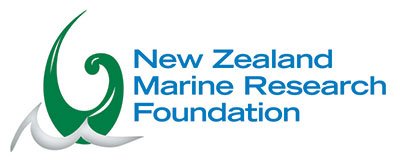Trends in Striped Marlin Catch Rates in Northern NZ
1999 - 2003
Funding: $16,600
(over three years including $10,000 from the Lion Foundation)
Researchers:
Blue Water Marine Research
Annual postal surveys collected catch and fishing effort information from recreational charter skippers who target marlin in Northland. The 2003 survey is the 25th in the time series. The results provide an excellent record of trends in marlin catch rates from the leading professional skippers in New Zealand over that time.
The first survey was initiated by the Ministry of Agriculture and Fisheries in 1977. Ten years later, during the white hot debate over the effect of Japanese and Korean tuna longline vessels were having on recreational marlin fishing, all available information concerning trends in marlin catches and catch rates were studied.
The clear conclusion of Minister of Fisheries, Colin Moyle, was the recreational and tourist fishery for marlin and other gamefish had declined and a three year commercial closure of the northern tuna longline fishery was needed. None of this may have happened if gamefish clubs had not kept complete catch records for many years and the Northland charter skippers survey had not provided their Catch Per Unit of Effort (CPUE).
In measuring CPUE it is not so important to have information for every boat that heads out over the horizon on a warm summer day. What is important thing is that there is consistent effort across years from boats participating in the survey. Northland charter boats provide this as they are:
Fishing the core striped marlin area
Specifically target marlin rather than other gamefish species
Across the fleet maintain a high level of experience and skill
Have a high standard of boats and reliable gear
Tend to fish through-out the season not just at weekends
We use the number of marlin caught per boat day as our unit of CPUE
There has been a clear increasing trend in catch rates since 1987 when marlin were protected from commercial exploitation in New Zealand waters. However, the peak in 1999 is very similar to catch rates in 1980 when tuna longline vessels were taking marlin caught around New Zealand. Another change since then is the much greater use of lures and fast boats in the present day charter fleet. One conclusion is that good fishermen fishing skip baits will catch marlin at about the same rate as good fishermen towing lures, when there are plenty of fish around. Fish tend to be hooked deep when fishing skip baits and this is not a good idea if they are going to be taggedand released.
Another use for a CPUE time series is to look for the effects of changes between seasons in sea surface temperature, El Nino or commercial catch for example. Intuition says that a warm season without a strong El Nino should be a good season with a high catch rate. Well, not always. The New Zealand catch of striped marlin seems to be influenced by other factors in the wider south west Pacific.
Further research: Since 2005 the Ministry for Primary Industries has funded a daily billfish logbook project to continue to collect striped marlin and other gamefish Catch Per Unit Effort. The research results of the 34 years of Northland recreational charter boat CPUE were provided to Western and Central Pacific Fisheries Commission for inclusion in the 2011 stock assessment of SW Pacific striped marlin.

